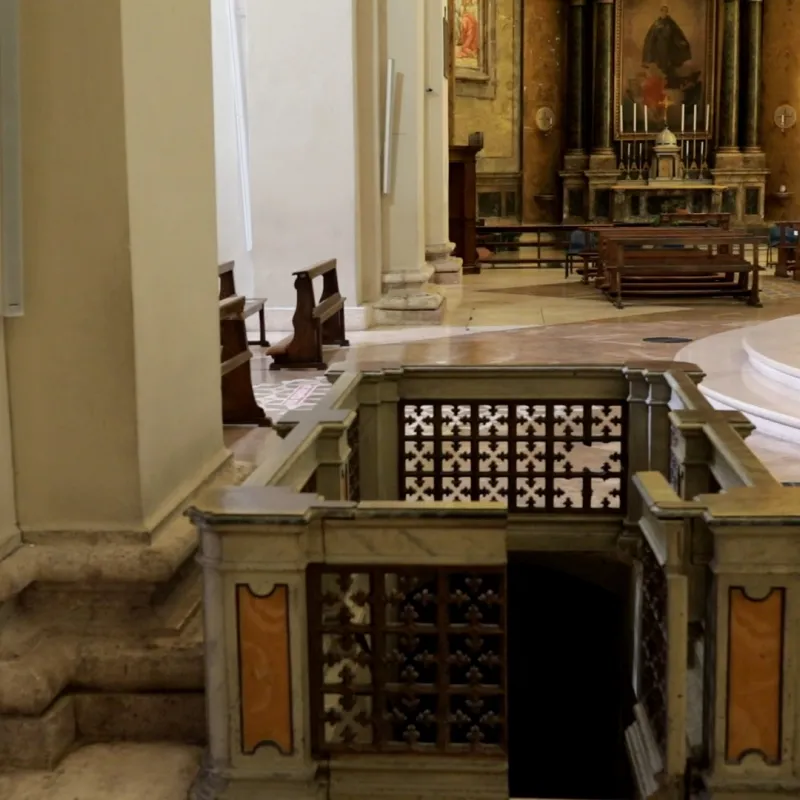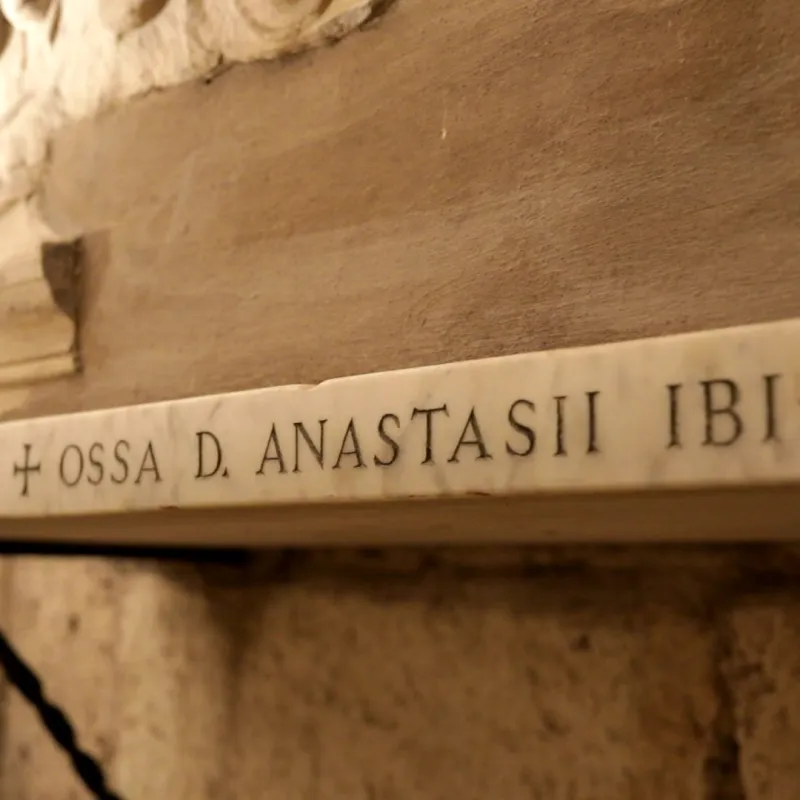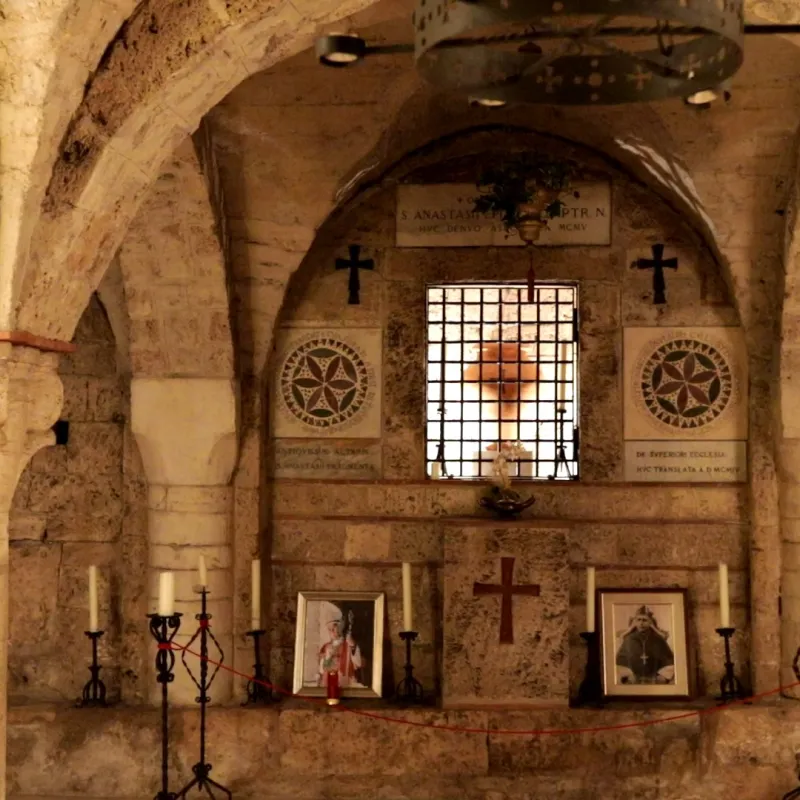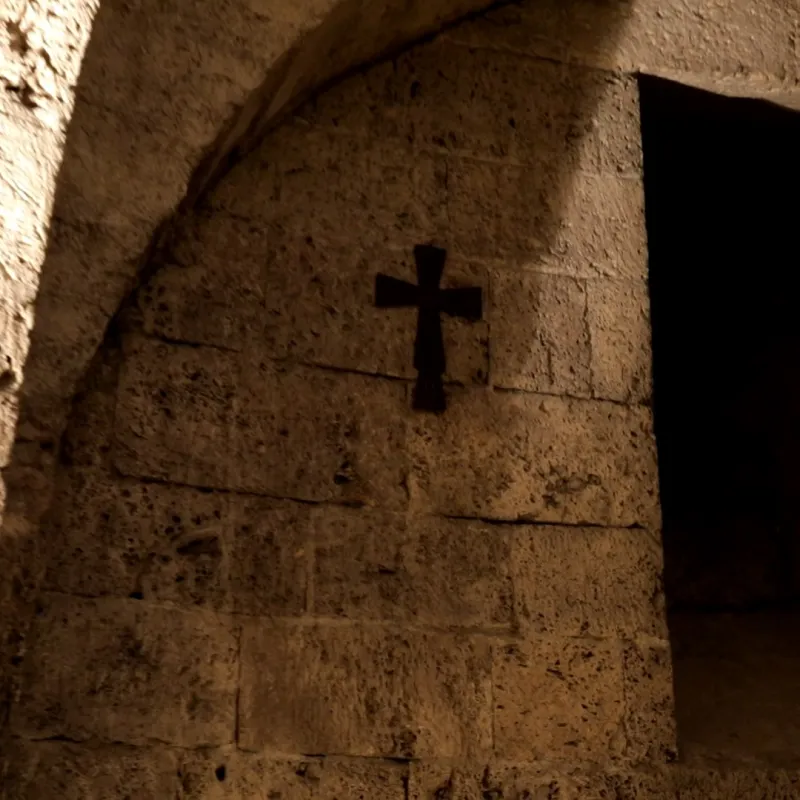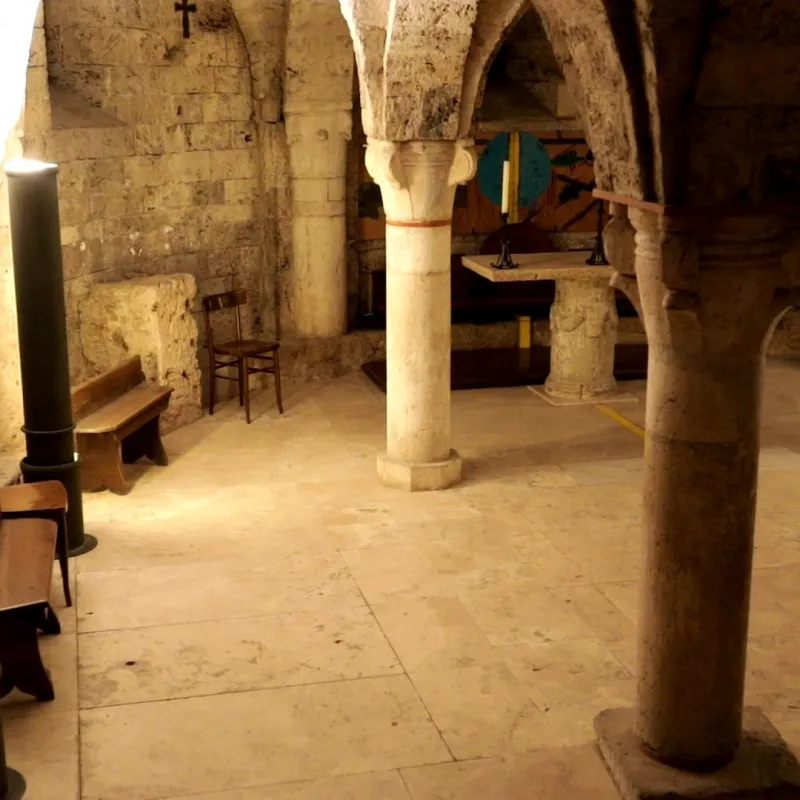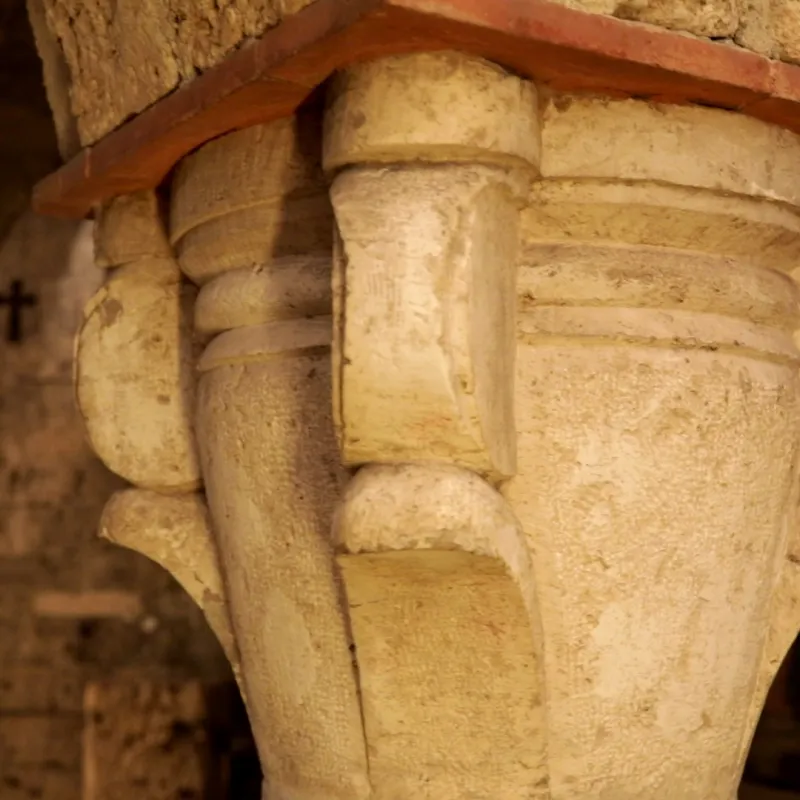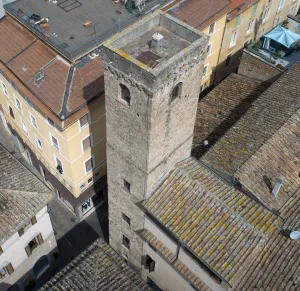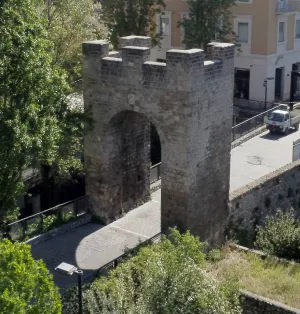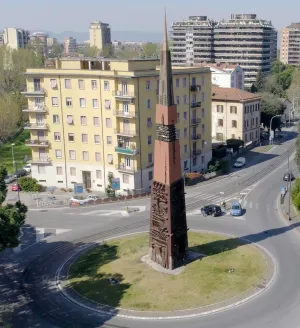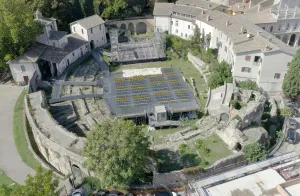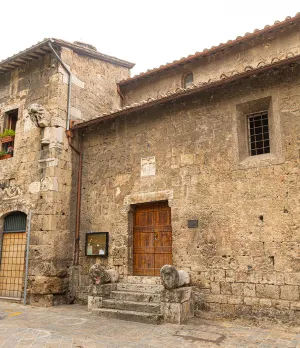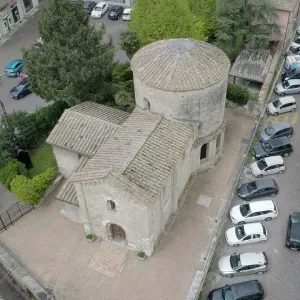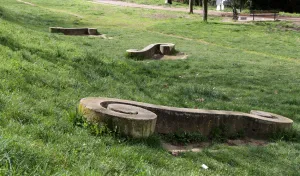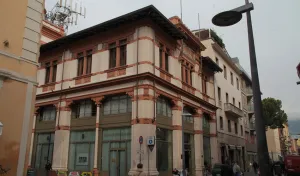Crypt of the Cathedral
It was built to house the remains of St Anastasius, who arrived from Syria in the early 6th century and settled near Ferentillo to lead a hermitic life of Christian perfection there. The fame of sanctity he soon attained led him to be called to the episcopal throne of Terni to assist the population afflicted by barbarian invasions and he was dubbed the "Defensor civitatis" because he remained to defend the city while everyone else fled. His tomb was found around the year 840 by some clerics from Terni.
The crypt is divided into three naves with three bays and four columns each, restored during the work promoted in 1904 by Luigi Lanzi and is covered by cross vaults reinforced by sub-arches.


On the side walls, the leaning half-columns, like the central columns, have two types of capitals: the cubic type, bevelled at the lower corners and the type with waterleaf and volute motifs, the latter reused and dating back to the 9th or 10th century. The parts restored by Lanzi are recognizable because they are divided from the original ones by a thin slab of terracotta.
Three simple embrasure openings can be seen in the apse, demonstrating that the crypt was not originally underground; all around it there is a low stone bench. The masonry is made of squared sponge stone, both on the inside and outside and is dry-filled.
On the right wall, fragments of a Flavian-age architrave, used as the sarcophagus of St Anastasius and of the front of a Roman sarcophagus are visible. On the left wall, there is a small pillar from the late 9th century used as the threshold of a rectangular opening. In the wall between the two entrance doors, there is a niche in which the remains of Saint Anastasius are preserved, with two votive tiles decorated in mosaic with cosmatesque motifs and Latin inscriptions on either side.
Near "Crypt of the Cathedral"
UNA SUITE NEL CUORE DEL CENTRO STORICO
#Guesthouse
Via dellArringo,44
CIR: 055032AFFIT30117
@: view email

RESIDENCE BIZZONI
#Hotel
V.le Carducci,10
CIR: 055032ALB3S10227
Web: go to site
@: view email

RESIDENZA GARIBALDI
#Guesthouse
Vico dei Tintori,9
CIR: 055032AFFIT18952
@: view email

LA CASA NEL BORGO
#Holiday homes and flats
Via Borgo Cavour,8
CIR: 055032CASAP19309
@: view email

AI CASALI
#Holiday homes and flats
Voc. Restano
CIR: 055032CASAP06178
Web: go to site
@: view email

VILLA SABATINI
#Bed & Breakfast
Via Faggeti,45
CIR: 055032BEBRE09624
@: view email

ALBERGO VELINO 2
#Hotel
VIA PILASTRI,6
CIR: 055032ALB2S18156
Web: go to site
@: view email

ALLOGGIO URBANO IN CENTRO STORICO
#Guesthouse
Via Federico Fratini,37
CIR: 055032AFFIT30820
@: view email

Che testo!
#Braceria
#Pizzeria
P.zza Solferino 20

Il cicalino
#Pizzeria
#Ristorante
P.zza S.Giovanni Decollato 12/b
Web: go to site
@: view email

Il Convivio
#Ristorante
Via del Leone, 37
@: view email

La Mora
#Trattoria
Str. di S.Martino 42
Web: go to site

La Piazzetta
#Ristorante
Via Cavour 9
Web: go to site

Me Gusta
#Ristorante
Via Cavour, 56
Web: go to site

Nascostoposto
#Pizzeria
#Ristorante
Via Sant'Alò 10
@: view email

Osteria dell'Olmo
#Osteria
#Ristorante
Via del Leone 28
@: view email

